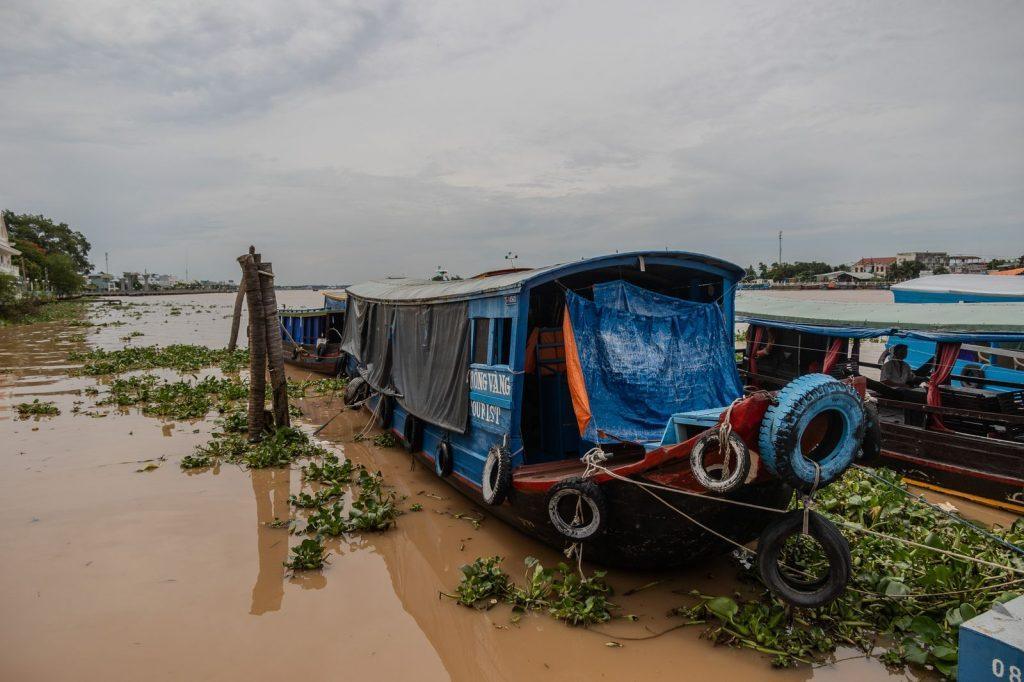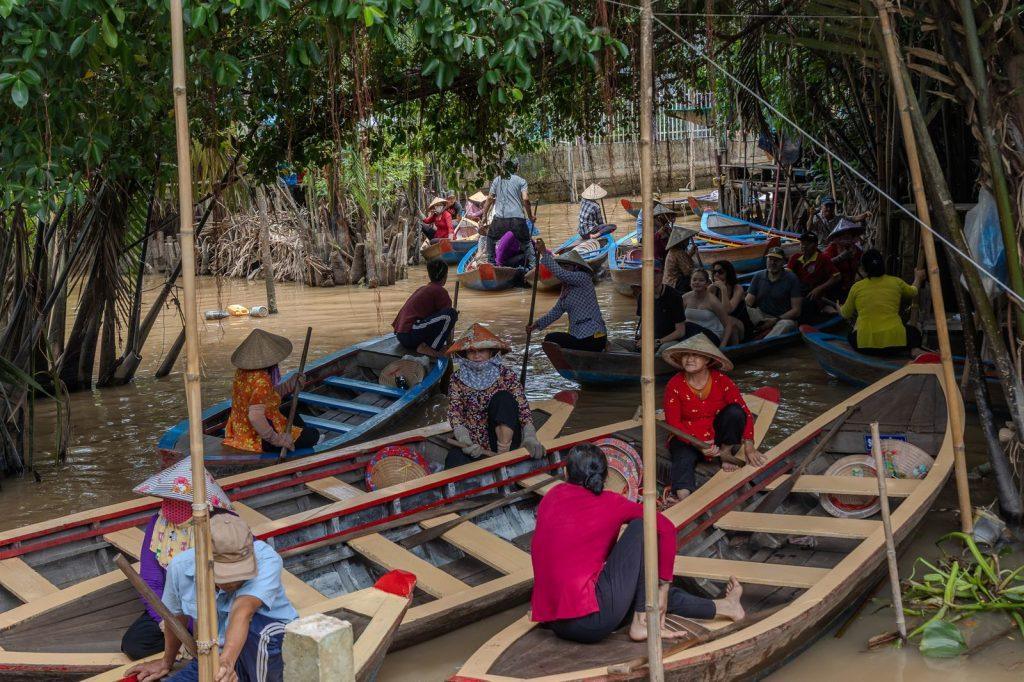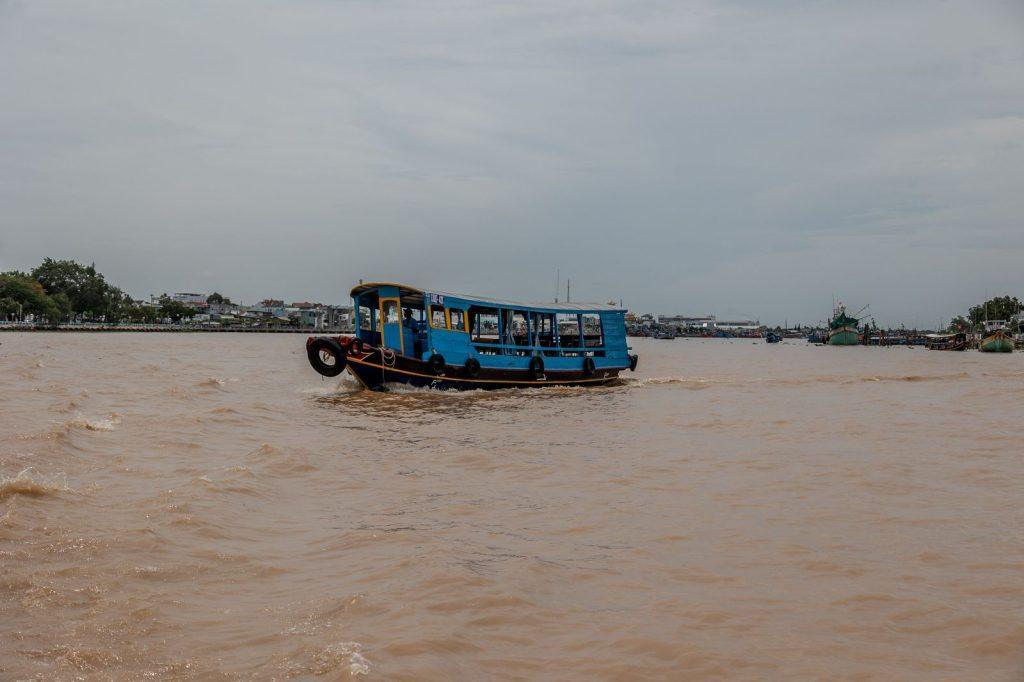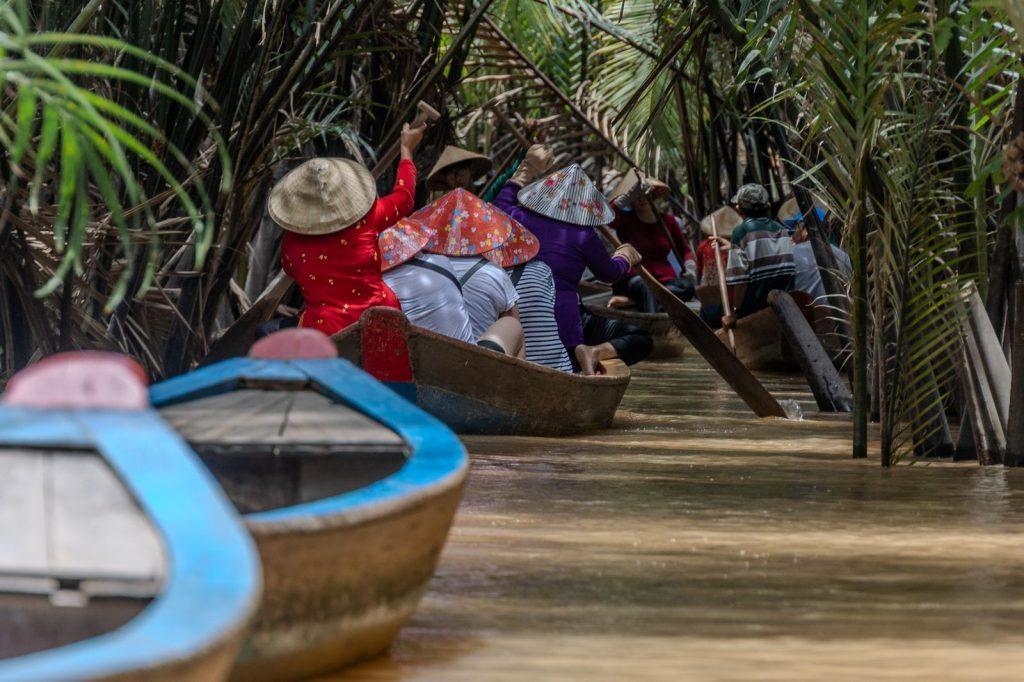At the gates of Ho Chi Minh City, the Mekong Delta Vietnam unfolds with rice paddies, floating markets, and thriving mangroves. The nation’s rice bowl, it also embodies a fragile ecosystem, threatened by climate change and upstream dams. Between living traditions and rapid transformations, this aquatic territory tells the story of a vital river and the challenges of an uncertain future.
Article by Damien Lafon / Photographs by Florian Lafon.

Mekong Delta Vietnam: a gateway to the river
The Mekong rises in the highlands of the Himalayas, crosses six countries, and finally reaches the South China Sea. At its southern end, it spreads into a vast freshwater plain: the Mekong Delta Vietnam. This fertile region is home to more than 20 million people and produces over half of the country’s rice. Yet behind this abundance lie contrasts between economic growth, age-old traditions, and mounting environmental threats. Thus, understanding the delta means grasping the fragile balance of an ecosystem essential to all of Southeast Asia.
Daily life at the rhythm of the Mekong
Each day, the river shapes the lives of its inhabitants. Stilt houses line the canals, while boats become floating roads. At dawn, wholesale markets come alive, especially Cái Răng near Cần Thơ. Dozens of sampans loaded with tropical fruits, vegetables, and fish cross paths in a vibrant ballet. However, modernization is gradually reshaping these places. Asphalt roads and supermarkets are expanding, reducing the role of floating markets. Despite this, the delta maintains a strong identity, carved out by water and centuries-old traditions.
Mekong Delta Vietnam: a threatened ecosystem
The natural wealth of the delta rests on a delicate balance. Rice fields alternate with mangroves, which shelter migratory birds, reptiles, and an impressive diversity of freshwater fish. However, this unique ecosystem is under increasing pressure. On one hand, dam construction upstream reduces the flow of sediments, vital for soil fertility. On the other hand, rising sea levels push salty water further inland, threatening crops. Thus, the delta, long known as “Vietnam’s rice bowl,” is becoming vulnerable in the face of climate change and regional political decisions.
Did you know?
Cái Răng floating market, near Cần Thơ, has existed for more than a century. Traders hoist a bamboo pole to show what product they are selling.

Adaptations and traditional know-how
In the face of these challenges, residents have developed ingenious strategies. Farmers combine rice cultivation with aquaculture, planting rice in the summer and raising fish or shrimp in the winter. This rotation helps diversify income and reduce risks linked to salinization. In the orchards, tropical fruits thrive: mangoes, durians, rambutans, and longans fill the stalls and fuel the local economy. Moreover, artisans preserve skills passed down for generations, such as weaving rush mats or crafting bamboo baskets. Thus, tradition and adaptation come together to maintain resilience.
Mekong Delta Vietnam: a cultural crossroads
For centuries, the delta has been more than just an agricultural zone. It is also a cultural crossroads. Khmer, Cham, and Vietnamese communities live side by side, each bringing their rituals, cuisines, and architecture. Buddhist pagodas rise alongside Catholic churches, remnants of French colonization. Yet despite this diversity, the river remains the unifying thread. It connects villages, carries goods, and shapes landscapes. Understanding this cultural mosaic means seeing the delta as a living space, where past legacies intersect with present challenges.
Tourism and environmental pressures
Today, the delta attracts millions of visitors each year. River cruises, cycling tours through orchards, and homestays are flourishing. As a result, the local economy benefits from new resources. However, the growth of tourism also increases pressure on the environment. Infrastructure construction, plastic use, and overcrowding at fragile sites strain natural balances. Yet eco-tourism initiatives are emerging, promoting respectful practices and valuing local knowledge. Thus, tourism can become a tool for awareness, provided sustainable models are prioritized.
Mekong Delta Vietnam: a laboratory for the future
Beyond its national role, the delta illustrates global challenges. Rising seas, erosion, and biodiversity loss affect many other coastal regions worldwide. Nevertheless, innovations developed here, such as green dikes or integrated crop management, inspire other countries facing similar threats. Moreover, researchers view the delta as a living laboratory, where the effects of climate change on human societies can be closely observed. Thus, the Mekong Delta Vietnam is not only a local territory: it embodies tomorrow’s global concerns.
Did you know?
Every year, the Mekong Delta sinks by about 2 cm. This phenomenon, caused by erosion and sand extraction, heightens the risk of flooding.

Conclusion: between memory and future
The Mekong Delta, at the edge of Ho Chi Minh City, is both a breadbasket, a refuge of biodiversity, and a cultural crossroads. However, it now stands at a historic turning point. Inhabitants, attached to their traditions, innovate to preserve their way of life. Furthermore, policymakers and scientists closely monitor this territory to anticipate the impacts of climate change. Finally, for travelers, exploring the delta means discovering a fragile aquatic world—vibrant, resilient, and full of hope.
Follow us on Instagram and Facebook to stay informed and support our media via www.helloasso.com
This article may interest you : Xijiang: A Miao Village Balancing Heritage and Modern Tourism
